Mike Duran's Blog, page 2
November 26, 2024
Against Echo Chambers (or How to Curate Ideological Diversity on Your Social Media)
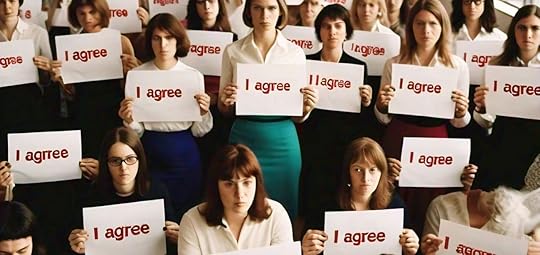

The re-election of Donald Trump was a national trigger for many Americans. Days after the election, Washington, D.C. Pittsburgh, New York City, Portland, and Seattle saw hundreds to thousands of protesters. LA Times and WaPo subscribers cancelled their subscriptions because the papers did not endorse the Democrat candidate. Feminists shaved their heads and vowed sex strikes. Celebrities promised to leave the country. Some Facebook users changed their profile to solid black in protest to Trump’s win. Even Goodreads members were exhorted to leave the platform because Jeff Bezos (Goodreads and WaPo owner), had the nerve to congratulate Trump.

AP Photo/Ted S. Warren
Another popular protest involved X (formerly Twitter). Elon Musk’s $44 billion purchase of Twitter initially incited lots of reactions. Especially when he began reinstating accounts banned by the previous admin. However, it was Musk’s growing support of Donald Trump and the results of the 2024 election that would be the tipping point.
Shortly after the election, numerous celebrities, academics, news outlets, companies, and even scientists announced their departure from X. Whoopi Goldberg, Elton John, Stephen King, Jamie Lee Curtis, Don Lemon, Jim Carey, Jack White, Bette Midler and many more notified their followers that they would be leaving X. Former Southern New Hampshire University president Paul LeBlanc declared he was leaving X, as well as Isaac Kamola, a political science professor at Trinity College. Even The Guardian pledged to stop posting on the site.
But rather than leaving social media altogether, most of these individuals simply migrated to another site.
Bluesky: A Liberal Echo Chamber?Over at the American Prospect, Ryan Cooper advised liberals to move to a site “somewhat friendlier to Democrats,” namely Bluesky.
Twitter used to be somewhat friendlier to Democrats, but Elon Musk bought it and turned it into another pit of white supremacist vipers. All Democrats, particularly famous ones, should leave the husk of Twitter at once for Bluesky, by far the most favorable replacement, as Threads is run by another censorial right-wing billionaire.
Interestingly, Threads was the previous “safe space” for Twitter exiles. However, it was quickly supplanted by Bluesky. (In part because, apparently, Threads owner Mark Zuckerberg became “another censorial right-wing billionaire.”)
The Daily Dot describes the social network Bluesky this way:
Bluesky was initially founded by Jack Dorsey in 2019, as an exploration into decentralizing Twitter. Dorsey has since left, and it is now owned and primarily operated by Bluesky Social, PBC.
As a decentralized social network, the network has an open-source framework built by its in-house team. This framework adds further transparency to how the network is built, what’s being developed, and why. A lack of transparency has been among the chief complaints about Twitter in recent years.
Ironically, in early 2024, Jack Dorsey left the Bluesky board and encouraged followers to remain on X. Dorsey feared the trajectory of the current Bluesky ownership would lead to “repeating all the mistakes” initially made on Twitter (“mistakes” reversed by Musk).
Nevertheless, after the re-election of Trump, Bluesky has seen a wave of new users, .
This has left some gushing. Bluesky Is Becoming ‘Blue Heaven’ for ‘The Resistance’ cheered one journalist. But while some are describing Bluesky as “a place of joy,” a “safe space” from hate, misogyny and transphobia, others are seeing it as a growing echo chamber.
At the Financial Times, Jemima Kelly wrote,
That there is a new place for such people to congregate is all well and good, but the problem is that the chatterati — very nice and non-conspiracy-theorising and non-overtly-racist though they may be — tend to coalesce around some quite similar viewpoints, which makes for a rather echoey chamber. I’m not sure I have ever felt more like I’m at a Stoke Newington drinks party than when I’m browsing Bluesky (including when tucking into Perelló olives and truffle-flavoured Torres crisps in actual N16).
An even more fundamental problem is that nobody on Bluesky seems to actually mind that they are in an echo chamber. When I told a friend, who happens to be an enthusiastic Bluesky user, what I was writing about this week, she replied “oh yes, but it is an echo chamber, that’s what people like about it, it’s lovely.” (bold, mine)
Kelly is not the only one to see Bluesky as an ideological echo chamber. So does Free Speech Union founder Toby Hunter who termed the site an “echo chamber” and said, “One of the ironies of people on the Left deserting X for Bluesky is that they are often the very same people who complain about how politics has become ‘too polarised’.”
Nevertheless, many Bluesky users are reveling in their newfound “echo chamber.” Shaun writes, “an echo chamber for the left sounds like a nice idea.” Another says, “It’s not an Echo Chamber it’s a No Assholes Chamber.” Still another, “‘you don’t want to hear conservative voices, you just want an echo chamber’ well yes.”
Apparently, creating a polarized, ideological silo is the attraction of some to Bluesky.
Moderation Tools for an Echo ChamberOne of the features Bluesky offers to assist users in moderating their feed is what some have nicknamed the ‘nuclear block,’ which prevents all interaction with blocked accounts. Bluesky, like Threads, makes its blocks public. It features a widely used “shared blocklists” tool that allows people to make lists of users they deem toxic (or racist, xenophobic, transphobic, pro-Nazi, or just MAGA cockroaches). Others can subscribe to those lists and auto-block or mute anyone on them.
Apparently, after minimal time on Bluesky, and some rather uncontroversial posts, I found myself on one such blocklist. The reasons for my inclusion are not articulated.

It appears that blocklists were one of the “moderation tools” requested by users at Bluesky. As a board member, Jack Dorsey had feared this kind of thing. In an interview with Pirate Radio, Dorsey explained:
Over at Bluesky, “little by little, they [the users] started asking Jay [Graber, the CEO] and the team for moderation tools, and to kick people off. And unfortunately they followed through with it,” Dorsey told Pirate Wires.
“That was the second moment I thought, uh, nope,” Dorsey added. “This is literally repeating all the mistakes we [Twitter] made as a company. This is not a protocol that’s truly decentralized. It’s another app. It’s another app that’s just kind of following in Twitter’s footsteps, but for a different part of the population.”
Compound this with the fact that Bluesky’s moderation team strictly enforces community guidelines, which forbid promoting “hate or extremist conduct.” Of course, what’s considered “hate or extremist content” is defined in such a way to serve political progressives. For example, Bluesky was initially hailed as “trans friendly,” attracting large groups of LGBTQ+ representatives. As the site was, initially, by invite only, this insured a more insular demographic makeup. But this approach was not without problems. As Wired reported during Bluesky’s start-up,
As people have flocked to Bluesky in recent weeks, the platform has been hit with a problem as old as the internet: nudity. Among those who recently joined the decentralized social network established by Twitter cofounder and former CEO Jack Dorsey are large contingents of the tech, trans, and sex worker communities who have brought their own social norms to the chaotically exciting social platform.
Part of those “social norms” involved nude pictures.
While limiting “the spread of nudity may have been affected in part by the potential future growth of Bluesky,” it was the strict enforcement of content moderation — specifically “hate speech” related to LGBTQ+ issues — that has kept Bluesky a “trans friendly” safe space. For example, according to MSN, many conservative users “face abuse and censorship” at Bluesky. Users identifying as MAGA or Republican were summarily included in blocklists. Others have reported having their account shut down after posting the simple phrase “there are only two genders.”
In this way, “moderation tools” can become a method of censorship. When a platform’s community guidelines tells users not to target “harassment or abuse” at any individual or group “including but not limited to, sexual harassment and gender identity-based harassment,” as Bluesky’s do, then simple, biological facts like “there are only two genders” become “hate speech.”
The Problem with Echo ChambersBut while such content moderation may provide a sense of safety to some, creating social media echo chambers carries inherent problems.
For one, echo chambers can perpetuate emotional fragility.
In their important book, “The Coddling of the American Mind: How Good Intentions and Bad Ideas Are Setting up a Generation for Failure,” Jonathan Haidt and Greg Lukianoff write,
“A culture that allows the concept of ‘safety’ to creep so far that it equates emotional discomfort with physical danger is a culture that encourages people to systematically protect one another from the very experiences embedded in daily life that they need in order to become strong and healthy.”
Indeed, contact with opposing points of view and ideological diversity is a necessary part of maturity and emotional growth. By equating heterodox opinions with actual threats to mental and/or physical health, we not only insulate our beliefs from interrogation, but we sensitize ourselves to numerous perceived micro-aggressions. Thus, the statement “there are only two genders” is only controversial to the individual unwilling to consider the wealth of contrary data, or emotionally beholden to its unquestioned denial. In this way, echo chambers perpetuate emotional fragility.
Echo chambers also perpetuate an inaccurate view of reality.
In his article Echo Chambers and the Ethics of Blocking, Aaron Ross Powell concludes,
…the risk of social media ideological uniformity isn’t the uniformity itself, but that social media leads us into believing that uniformity is representative of the whole. (italics in original)
This is precisely what happened in the 2024 election. Those who were most distressed by the results were those who believed the rhetoric within their own circles. Pollsters have admitted as much, acknowledging that they missed rural voters, conservatives, and young males. Their misguided results were evidence of an echo chamber they’d constructed. When the voices you’ve surrounded yourself with have convinced you that they’re representative of the mainstream, the average, the consensus, the Truth, you are in an echo chamber.
Michelle Quirk, writing in Psychology Today, describes this as “the false consensus effect.”
This cycle is particularly strong in today’s digital world. Social media platforms use algorithms that amplify echo chambers by curating content that aligns with users’ past interactions. As individuals continually engage with similar content, they become increasingly entrenched in their views and less likely to encounter diverse perspectives. These algorithms exacerbate the false consensus effect, fostering a perception that their views are more popular and correct than they are.
Living inside an echo chamber reinforces an inaccurate view of our world and the people in it. The more we shut out opposing points of view, and the people who hold those views, the more detached we become from reality.
Echo chambers reinforce misinformation and confirmation bias.
In her article, Echo chambers: how they’re created and how to avoid them, Story Pennock suggests,
…misinformation thrives in echo chambers. If you only see posts that you agree with, you’re less likely to be critical of false or misleading videos or memes. This is called confirmation bias. When all the posts you see reinforce your point of view, you will not encounter opposing opinions, and you may end up spreading false information.
Curating a social media feed that sifts out certain news stories, articles, and opinions makes us more susceptible to misinformation. Like the folktale, The Emperor’s New Clothes, when we spend our time listening to sycophants, we often won’t recognize our own nakedness (logical and ideological) until too late.
Finally, echo chambers require vigilant content screening, enforcement, and enforcers. In the same way that the human body fights off infection, echo chambers require “antibodies” designed to locate and eliminate contrary ideas or unacceptable conduct. This is often done through moderation teams. While such moderation is absolutely necessary, it can indeed be abused. It is not uncommon to learn of social media users whose posts are blocked or accounts are closed because of rather trivial, questionable infractions. On a larger scale, Mark Zuckerberg eventually confessed that he was wrong to censor massive amounts of COVID-19 content due to pressure from the Biden administration. Point being: Content moderation is a double-edged sword.
Still, the influx of new users has forced Bluesky to quadruple its moderation team. Compounding this is the demographic makeup of the platform. With ideological liberals flocking to the site as a “safe space,” reporting even minor infractions has become status quo. Indeed, the Bluesky Safety team recently posted that it received 42,000 moderation reports in a 24 hour span, versus 360,000 in all of 2023. The mass influx of reports is likely attributable to the expectations of the account holders. In an echo chamber, users become attuned to perceived micro-aggressions and are vigilant to report potential offenders to the hall monitors.
Curating “Diversity” on Social MediaOf course, there is a time for like-mindedness and group homogeneity. Congregating with people who hold similar views can be refreshing and life-giving. Nevertheless, we must always be vigilant to insulating ourselves against differing points of view and tribes. Since most agree that echo chambers can be unhealthy and should be mostly avoided, how can we curate ideological diversity in our social media feed?
One artist at Bluesky wisely wrote,
I hope people didn’t flee to Bluesky thinking it was a “safe space”. It’s not. It’s littered with as many concepts that you WON’T LIKE as anywhere else online. The only “safe space” that will EVER exist is inside your head. Acknowledge the constructive, ignore the detrimental and you will be fine.
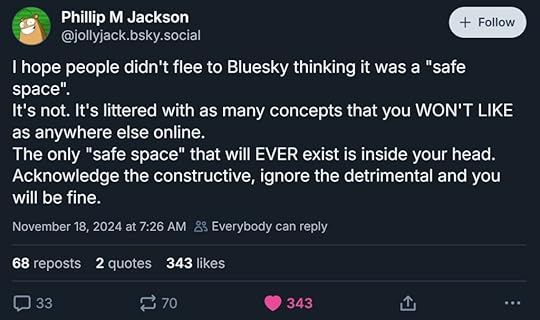
Jackson is correct in asserting that the only real “safe space” is the one between your ears. Cultivating emotional toughness and tolerance for differing points of view is important to healthy online engagement. Of course this doesn’t mean we should tolerate abuse or misconduct. But in most cases, such bad behavior can simply be ignored. Don’t comment on the offending post. Just scroll past. The long-standing internet dictum “Don’t feed the trolls,” is still applicable.
Of course, blocking those who repeatedly demean, defame, threaten, or bully you online is quite valid. While we should be able to tolerate civil discourse, objections, and disagreements, we are under no obligation to endure everyone’s tantrum. Nevertheless, curating your social media circle based on ideological homogeneity can be dangerously cultish.
Thus, it’s important to distinguish between someone actively trolling you, making real threats, and refusing goodwill engagement, and those who simply disagree with and challenge your POV.
Which is why Pennock suggests the obvious,
…diversify the types of news and entertainment sites that you follow to get a diverse range of perspectives. Follow left-leaning and right-leaning sites.
The single best thing we can do to ensure we don’t tumble into an echo chamber is to entertain and engage those outside of our ideological / political / spiritual circle.
In GCF Global’s What is an Echo Chamber, the author explains how “filter bubbles” can actually “prevent you from finding new ideas and perspectives online.”
The Internet also has a unique type of echo chamber called a filter bubble. Filter bubbles are created by algorithms that keep track of what you click on. Websites will then use those algorithms to primarily show you content that’s similar to what you’ve already expressed interest in. This can prevent you from finding new ideas and perspectives online.
Simply put: We can avoid an echo chamber by broadening — not shrinking — our filter bubble.
For this reason, I intentionally strive to keep my social media feed eclectic. Between Facebook, X, Instagram, Bluesky, and Threads, I follow an extremely diverse crowd. Atheists, Christians, religious progressives, Democrats, Republicans, Libertarians, feminists, queers, trans, detransitioners, political pundits, independent journalists, mainstream journalists, mainstream health experts, flat earthers, evolutionists, young earth creationists, and the list goes on. I follow the Satanic Temple and the Church of Satan on X. I follow Stephen King and the NYT. I follow liberal authors whom I disagree with on just about everything. I even follow people whom I consider heretics. Striving to interact with different people and ideas is, in the long run, far more healthy than curating an echo chamber.
Despite the recent migration from X, the site still far outpaces Bluesky in use. According to Forbes, “Bluesky has about 14.5 million total users, while X said in March about 250 million people use the social platform every day.” Even more interesting, shortly after the great Xodus to Bluesky, CNN reported that under Elon Musk, X is far more ideologically balanced than it was as Twitter.
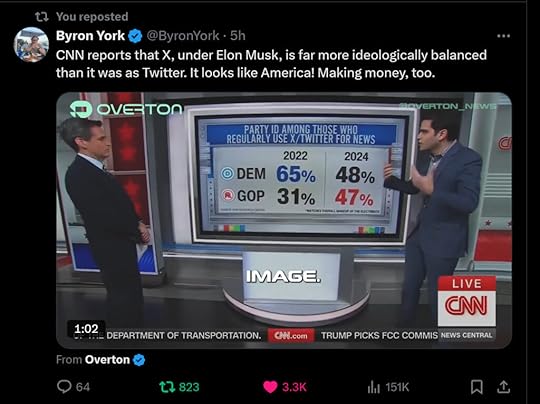
Indeed, such political balance should be hailed as a model for healthy discourse, not a reason to split.
That is, unless ideological uniformity is one’s goal.
Anyone is susceptible to falling into an echo chamber; liberal, conservative, or somewhere in between. Demonizing entire groups of people and forcing them outside our bubble, may make us feel “safe,” and intellectually superior. But in the long run, it creates a “false consensus effect,” making us ever more emotionally fragile and out of touch with reality. Of course, curating our social media feed to reflect our unique interests and values is understandably permissible. The problem is when that curation become an extension of small mindedness, bigotry, and fear.
October 7, 2024
What Does the Bible Say about Haunted Houses?
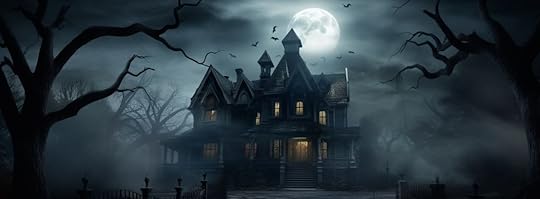
One day, during my pastorate, I was approached by a young couple. “Pastor,” they said, “we have a ghost in our house.” This was not a statement I was prepared for. In fact, I nearly laughed, thinking it was a prank. However, the couple was unnervingly serious.
They proceeded to tell me specifics about this “haunting.” Apparently, both of them had seen the apparition of a young adult female. Always in the same room. Occasionally, it would hover atop their bed. Other paranormal phenomenon occurred in this room. Not only were there “cold spots,” but swarms of horseflies would sometimes cluster upon the single window in that room. Nevertheless, as far as they knew, the house had no history of overt occultism or evil.
So was the house haunted? Or was this young couple simply mistaken? How to Handle Ghosts is typically not a topic included in ministerial training. It started me on a quest to understand what the Bible says about haunted houses. Here’s some of the conclusions I’ve reached.
First, there are no examples of haunted houses in the Bible. Yes, there are examples of households being cursed. For example, Proverbs 3:33 says, “The curse of the Lord is on the house of the wicked, But He blesses the home of the just” (NKJV). Sometimes, this “curse” appears to manifest in one’s genealogy. Eli, the high priest during the reign of the judges, had his “house” cursed by an unknown prophet (I Sam. 2:27-33). This curse was initiated by Eli’s sloth and wickedness, and led to his sons’ corruption of the temple. Thus, the prophet pronounced a curse: “all your descendants will die in the prime of life” (vs. 33). But while divine curses often relate to one’s genealogical “household,” it can also relate to a physical structure or possessions. Speaking of a curse being issued across the land, Ezekiel writes,
The LORD Almighty declares, ‘I will send [the curse] out, and it will enter the house of the thief and the house of anyone who swears falsely by my name. It will remain in that house and destroy it completely, both its timbers and its stones'” (Zech. 5:3 NIV).
Here, the divine curse affects a house’s actual “timber” and “stones.” So in this sense, a “household” curse could relate to a family and its ancestral lineage and/or the actual dwelling place of the cursed family.
There are, of course, examples of demonized individuals dwelling in physical places. In Acts 19:16, evil spirits residing in a demonized man leapt upon a group of would-be exorcists and chased them from the house. However, in such cases, the physical dwelling place of the demonized is not viewed as haunted. Its “timber” and “stones” are not demonized. The man living inside requires deliverance, not the structure.
While there are no examples of actual haunted houses in Scripture, there are examples of households and families that are divinely cursed. Sometimes this curse even extends to the physical properties of the house. Disrepair or destruction may visit a structure as part of a household curse. Nevertheless, though evil entities can be attached to individuals, there is little evidence to suggest that evil spirits can actually “possess” a physical dwelling. Which leads to my second point.
One of the biblical arguments against haunted houses is that “nothing is unclean in itself” (Rom. 14:14). This retort was issued by the Apostle Paul regarding “unclean” things, like meat sacrificed to idols. His argument is, “things” aren’t inherently evil. People can use things for evil purposes and defile them, but objects aren’t inherently evil. The apple wasn’t evil. It was Adam and Eve’s taking of it that was.
Of course, some things are specifically designed for evil. A good example is a Ouija board. Ouija boards consist of two objects: a board (marked with letters, numerals, and symbols) and a planchette. Perhaps those items could be used for other things. For example, if I was lost in the wilderness, I could burn the Ouija board for warmth. (Not sure why anyone would have a Ouija board in the wilderness, but just go with it.) In this sense, a Ouija board could be used for good, depending upon its user. But by design, Ouija boards are intended as tools to contact disembodied spirits. Again, this doesn’t make them inherently evil. The wood on a Ouija board is qualitatively little different than the wood on a checker board. Nevertheless, the intended use of a checker board is far more innocuous than that of a Ouija board. This doesn’t mean that Ouija boards are harmless. Especially if someone conjoins the 1.) design and make-up of the object with 2.) nefarious intent. Can evil spirits attach themselves to Ouija boards? Here’s where it gets tricky.
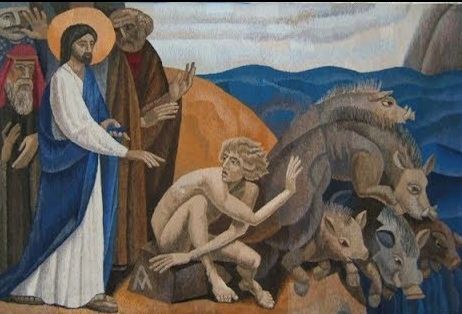
Gadarene demoniac
The Bible teaches that demons attach themselves to people or other living things. When speaking of the return of an unclean spirit, Jesus referred to its residence as a “house.” (Matt. 12:43-45). “When an impure spirit comes out of a person, it goes through arid places seeking rest and does not find it. Then it says, ‘I will return to the house I left…'” (Vss. 44-45). The human person houses the spirit. In the account of the Gadarene demoniac, the demons pleaded with Jesus to be cast into the swine rather than be left without a host (Mk. 5:1-20). Apparently, animals are the last resort for demonic habitation. In this sense, demons attach themselves to living things, not structures or objects. Occult objects, like the Ouija board, simply act as a conduit or tool for a person’s evil, misguided desires. Demons may, perhaps, dwell in proximity to such objects, but they don’t indwell them.
(Note: The subject of ghosts is a larger, and similarly complex, subject. In this post, I’m focusing more on haunted houses than what the Bible says about ghosts. For a more detailed discussion about ghosts, see my posts Are All Ghosts “Demons”? and Ghosts and Quantum Theory. Also, some distinguish between ghosts and demons. Theologian Michael Heiser notes that Scripture employs uniquely different words for ‘ghost’ and ‘demon.’ If a distinction between ghosts and demons can be made, it follows then that ghosts may align differently to physical locations than demons.)
So how does this apply to houses? Well, again, houses aren’t inherently evil. The wood, concrete, insulation, etc. aren’t evil. However, buildings can be used or built to house evil. For example, while researching one of my novels, I visited Templo Santa Muerte, the Holy Death Temple, in Los Angeles. This is an actual church for those who practice Santa Muerte. Inside, it was a small church with maybe a dozen pews. On the altar, stood a life-size skeleton bedecked with flowers and wreaths, surrounded by vigil candles and trinkets. It was really creepy. Nevertheless, the church, basically, occupies a strip mall. So is that strip mall “possessed”? Or is it just that unit? If so, are the carpet, doors, and water faucets somehow evil?
It’s a complex question. If anything, distinguishing objects used for evil purposes from the intent of the user is important. This includes houses. Spirits cannot “possess” houses, but they can attach themselves to people (and swine). In this sense, “haunted houses” are often purged by delivering someone from an evil spirit. The “possession” plagues the occupants, not the house. By breaking one’s ties to evil or a generational curse, the house is cleansed. This brings me to a third point,
Scripture does teach that actual “places” can be defiled by evil. For example, the Bible seems to suggest that certain ground can be “hallowed” or “holy.” When Moses approached the burning bush, God commanded him to remove his shoes because he was standing on “holy ground” (Ex. 3:5). Likewise, the commander of the Lord’s army told Joshua to take off his sandals because he stood on holy ground (Josh. 5:15). Likewise, the physical temple was described as a sacred space which required appropriate reverence to approach and enter. But if an actual location or dwelling can be hallowed, could it not also be… unhallowed? As mentioned, the Bible does not teach that objects can be “possessed.” Demons reside in people, not things. Nevertheless, Scripture does suggest that territories or locations can be overshadowed by evil.
A good example of this is the Prince of Persia. While fasting and praying, the prophet Daniel received an angelic visit from the archangel Michael. This powerful being explains to Daniel that he was delayed because he was fighting the “prince of Persia” (Dan. 10:13). Many theologians have concluded that the prince of Persia was an equally powerful angelic being who ruled over Persia, a specific geographical area, and resisted Michael. This has led some Christians to develop a theology regarding “territorial spirits”—demonic entities which rule over specific regions, cities, or locations. This concept also relates to the division of the land in Scripture (Deut. 32:8-9) which describes how God divided the nations of the earth among the “sons of God.” Some suggest that this passage refers to the origin of territorial spirits, beings who were once angels that administered the earth on behalf of God. Furthermore, in the Book of Revelation, Jesus called Pergamum the place where “Satan’s throne is” (Rev. 2:13 KJV). And when speaking about Smyrna, Christ described the city as housing “the synagogue of Satan” (Rev. 2:9-10 KJV). More broadly, earth is described as being under Satan’s rule. He is called “the god of this world” (II Cor. 4:4) and the “ruler of this world” (Jn. 14:30). In this sense, it’s possible that certain territories or places could be hotbeds of evil and Satanic activity. For instance, cities that are overrun with poverty, crime, drug addiction, sex trafficking, or occultism may be tethered to demonic “principalities and powers” (Eph. 6:12 KJV) which occupy that area. Not coincidentally, Ephesus, the church to whom Paul was addressing that epistle, was home to one of the famed Seven Wonders of the World — the Temple of Artemis. Artemis was known to the Romans as Diana. The worship of Diana was central to the economy of Ephesus. So, again, we can see devilish entities having certain geographical boundaries and/or import.
Another example of this dynamic could be that of Gehenna. This was a location south of Jerusalem called the “Valley of [the sons of] Hinnom.” Here, some of the ancient Israelites had sacrificed their children to the Canaanite god Molech (II Chron. 28:3; 33:6; Jer. 7:31). In later years, Gehenna came to be viewed as an unclean place. It was used for burning trash from the city of Jerusalem. In fact, Jesus sometimes used Gehenna as an illustration of hell (Mk. 9:43; Lk. 12:5; Matt. 23:15). A contemporary parallel could be places like Auschwitz and Dachau. Because of the great atrocities committed there, the earth is seen as desecrated, unholy ground. Some place abortion clinics and locations of mass murder or abuse in a similar category.
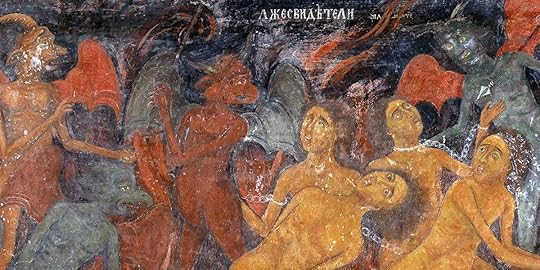
Gehenna
All this could lead us to ask whether certain houses or geographical locations might exist in a similar state. Perhaps through an occult ritual or atrocity a site has become desecrated. Would that make it a haunted house? Perhaps. In the case of territorial spirits, a house that is overshadowed by evil, for whatever reason, could represent a microcosm of a larger type of geographical evil. Again, the primary question would be what is tethering said evil to a particular place. Some exorcists make a distinction between between demonic infestation and possession. While a location cannot be “possessed,” it can be “infested.” Demons are drawn to particular places because of territorial rule or historic evil; they are attracted to the residue of evil, atrocity, or tragedy.
Furthermore, there’s numerous references to household blessings mentioned in Scripture. As mentioned earlier, the writer of Proverbs said, “God curses the house of the wicked but blesses the house of the righteous” (Prov. 3:33). If God actually “curses the house of the wicked,” how would such a divine curse manifest? When Jesus sent His apostles out, He commanded them, “Whatever house you enter, first say, ‘Peace be to this house!'” (Lk. 10:15). The fact that “peace” and “blessings” can rest upon a house, is an important concept to remember when discussing cursed houses. The Passover was the ultimate household blessing wherein the blood of lamb, sprinkled on the doorpost, caused the death angel to pass-over the dwelling (Ex. 12:13-28). For these reasons, household blessings have become a traditional practice among many Christians and churches. Not only are they seen as a pre-emptive “cleansing” of residual evil, but as a declaration and appeal of Heavenly Protection.
So what does the Bible teach about haunted houses? Firstly, it makes no direct mention of haunted houses. Yes, there are household blessings and curses. Yet things (like houses) aren’t inherently evil. Demons attach themselves to people, not places. Nevertheless, not only can certain areas be overshadowed by evil spirits, but certain ground can be cursed. Gehenna was not possessed. However, the land was defiled by its awful history. Therefore, I’d have to conclude that hauntings and haunted houses are biblically possible. Just like a Ouija board can be an avatar or conductor for evil, a certain location may act as a funnel for Darkness. However, as Christians, we believe that whatever evil exists within or in proximity to a certain location, is sourced in something other than the actual structure or land. As such, ritualistic cleansings or exorcisms could be an option. Unless, like Gehenna, a location is so defiled and spiritually polluted that abandonment is the only recourse.
***
At this point, you may be wondering how I responded to the young couple who’d claimed they had a ghost in their house. Well, I visited them and asked some specific questions about the house. Did they know anything about its history or previous owners? They did not. It was an older house, built in the 40’s or 50’s. It occupied a large lot and was surrounded by olive and other fruit trees. The bedroom they’d experienced the paranormal phenomenon in sat partly below ground. Its single window was at ground level. This was the window where’d they’d encountered a swarm of horseflies. We walked through every room of the house, reading Scripture and praying. There were no dramatics. No poltergeist activity. No disembodied voices. After a short while, we wrapped things up and I left. They never reported another incident after that. Whether or not there really was something there remains a mystery. If that young couple was to be believed, then whatever was there was driven off by prayer and Scripture. Only God knows.
September 11, 2024
“Keeper of the Woods” is Live!
My latest novella “Keeper of the Woods” is now available in Kindle and in paperback.
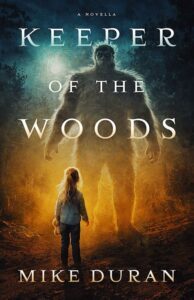
I have long been fascinated with cryptozoology, in particular, the ongoing claims for the existence of sasquatch. While there’s a variety of opinions (and outright skepticism) about the actual existence of such mysterious hominids, many of the claims now veer into the paranormal, with some even conjecturing quantum elements. “Keeper of the Woods” is a mash-up of contemporary cryptid theories intertwined with the story of a young woman seeking to learn the truth about her traumatic past. I had a ton of fun with this story, and I hope you enjoy it.
“Keeper of the Woods” is now available in Kindle and in paperback. Also, signed copies are available for only $12. If you’re interested in a signed copy, you can email me at cirdog@yahoo.com with your request. Paypal, Venmo, or check are all accepted. Once again, thanks for reading!
August 26, 2024
“Keeper of the Woods” Now Available for Pre-Order
I’m thrilled to announce the publication of my 14th book. My novella, Keeper of the Woods, is currently available for pre-order on Kindle. Here’s the back cover copy:
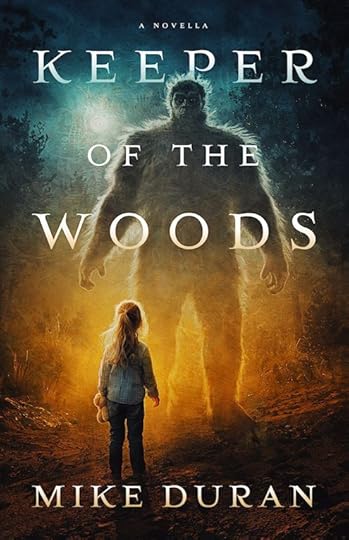
Sacred Springs retreat center, located in the isolated wilderness of Mount Shasta, is a popular destination for spiritual seekers. But while the idyllic, off-the-grid ranch offers tranquility and rest for those on pilgrimage, it also harbors a dark secret.
After a string of disappearances near the retreat, rumors of matah kagmi have re-emerged. Known by the indigenous people as Keepers of the Woods, these legendary sasquatch-like forest dwellers have long been said to roam this wilderness. Sacred Springs has had its share of unusual encounters with the mysterious creatures. But when Poppy Carlson arrives at the retreat center with a group of spiritual sojourners, all matter of high-strangeness begins.
Survival Horror meets Psychological Thriller in this novella by award-winning author Mike Duran.Haunted by feral images, Poppy has been diagnosed with Dissociative Amnesia. Found wandering in the forest as a child, the successful gallerist now seeks to reconstruct her mysterious past. While her search for healing has brought her to Sacred Springs, something else awaits. For a presence far more sinister than mythical cryptids haunts the forest retreat. Not only does Poppy’s search awaken her traumatic past, but with it a Beast that threatens to destroy them all.
***
Keeper of the Woods releases September 10. You can pre-order the novella on Kindle HERE.
May 17, 2024
The Top 10 Horror Stories in the Bible
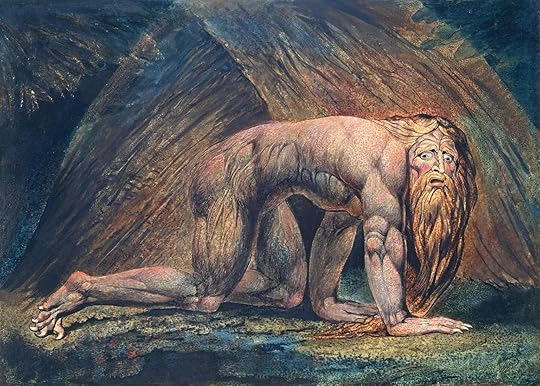
The genre of horror is typically seen as incompatible with Christianity. Though not representative of all evangelicals, many reject the entire horror genre, seeing it as a vehicle of occultism, and a tool for Satan. At the least, they argue, Christians should be focused on “the good, pure, and true” (Phil. 4:8) and not depictions of darkness and evil. Though impassioned, many such critiques of the horror genre lack theological depth. Nevertheless, these objections remain common among evangelicals.
What makes evangelicals’ avoidance of the term “horror” so ironic is the proliferation of dark, horrific content in the Bible.The likely reasons for this disavowal of the horror genre is something I explore in my book Christian Horror: On the Compatibility of a Biblical Worldview and the Horror Genre. Yet one thing that makes evangelicals’ avoidance of the term “horror” so ironic is the proliferation of dark, horrific content in the Bible. Indeed, Scripture contains a significant number of frightful, disturbing images and stories.
In this article, I have endeavored to compile a list of the Top 10 Horror Stories in the Bible. Of course, these biblical references aren’t all “stories,” per se. Some are events or incidences, while others are themes or categories (like “sin” and “hell”). Such lists are always subjective. For example, some will find the Rape of Tamar far more horrific than the Gadarene demoniac incident. Either way, it’s hard to argue that the Bible is a feel-good book… especially when it contains so much horrific content. So here’s my stab (pun intended) at The Top Ten Horror Stories in the Bible.
All Scripture quotes are from the NIV unless specified.***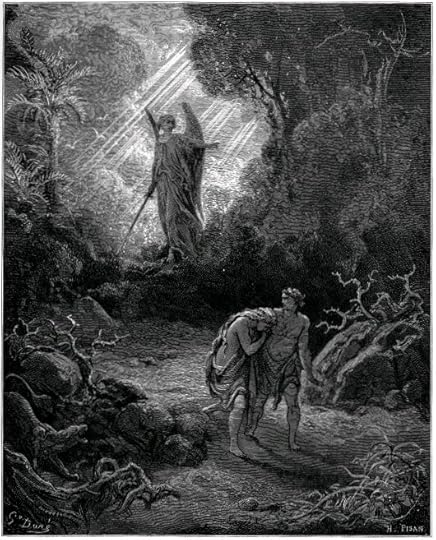
The Fall of Man — This will undoubtedly fly under the radar of some who are odd enough to make such lists. But sin, its origins, effects, and consequences, are indeed the primary stuff of the horror genre. While films like Se7en depict the horrors of the Seven Deadly Sins, the very concept of spiritual and moral degradation are rooted in the idea of Man’s fallenness. Sin is an unnatural state; a condition which has radically deformed and destroyed humans. Men become Monsters because of sin. Robert Louis Stevenson’s The Strange Case of Dr. Jekyll and Mr. Hyde probes this idea of these dual natures — a civil, humane nature and a beastly, wicked nature. It is a motif threading both Scripture and the horror genre. Because of the Fall, the Bible proclaims, “There is none righteous, no not one (Rom. 3:10). Indeed, the Fall of Man is a pivot of biblical history. Not only was Paradise torn asunder by Adam and Eve’s delinquency, but their relationship with God was severed. Man’s alienation from his Creator, and the subsequent consequences, is one of the most tragic, horrific narratives in Scripture.
The Flood of Noah — Even though Noah and his ark are the stuff of nursery rhymes, the incident itself is laced with nightmarish imagery. The Flood was an act of Divine judgement. “The Lord saw how great the wickedness of the human race had become on the earth, and that every inclination of the thoughts of the human heart was only evil all the time. The Lord regretted that he had made human beings on the earth, and his heart was deeply troubled” (Gen. 6:5-6 NIV). It was the depravity of the human race (see: the Fall of Man) that moved God to judgment. In fact, that judgment was rather slow and excruciating. Unlike a lightning strike or a cardiac arrest, the floodwaters rose incrementally. Entire cities probably scrambled to survive. Frantic victims clung to makeshift rafts, pleading to be drawn into the Ark. The bloated carcasses of beasts and humans likely blanketed the waters. How many hundreds of thousands (millions?) of human beings died? The Flood of Noah was probably one of earth’s earliest mass extinction events. Not to mention, a boat jammed with reptiles, leopards, porcupines, skunks, and vultures carried its own unique horrors.

The Plagues of Egypt — The 10 plagues of Egypt (Exodus chs. 7-11) is one of the most unique collections of miracles found in Scripture. Also, one of the most awful. Indeed, some of the individual plagues leveled by Jehovah against an obstinate Pharoah, are cringe-inducing. Swarms of lice. Outbreaks of boils. Infestations of frogs. Rivers of blood. This alone should have brought Pharoah to his knees. But it only made him more defiant. Which led to the most solemn of all the plagues — the death of every first-born son (Ex. 12). Often missed in our reflection upon this story is its backdrop. Not only is Moses sent to rescue the Israelites from their Egyptian captivity (Ex. 9:1), but this rescue involves a clash of spiritual superpowers. “[A]gainst all the gods of Egypt I will execute judgment: I am the Lord” (Ex. 12:12 NIV). The Plagues of Egypt were the manifestation of a supernatural war: Yahweh vs. the gods of Egypt. That this divine conflict culminates in a largescale slaughter of first-born males by a destroying angel (Ex. 12:23), or an “angel of death,” only compounds the horror. It’s no surprise, then, that the event has so cauterized our collective psyche as to warrant a horror film re-enacting the plagues and led to the anthologizing of Horror Stories for Each of the Passover Plagues. The Plagues of Evil are a virtual tour de force of classic horror tropes — death angels, battling “magicians,” scourges of bugs and boils, mass death, and a clash of gods. Break out the popcorn!
Sodom and Gomorrah — Another Old Testament entry into the horror category must be the judgment leveled by God against the cities of Sodom and Gomorrah. While some contemporary commentators have attempted to strip the story of its historic connection to homosexual perversion, Scripture is clear. For example, as the story unfolds, two angels are sent to Lot to rescue him. However, when the city learns of the presence of these two strangers, “the men from every part of the city of Sodom—both young and old—surrounded the house. They called to Lot, ‘Where are the men who came to you tonight? Bring them out to us so that we can have sex with them'” (Ge. 19:4-5). While some attempt to deflect the nature of the city’s sins, the New Testament writers corroborate its deviance. Illustrating God’s judgment, the apostle Jude wrote, “In a similar way, Sodom and Gomorrah and the surrounding towns gave themselves up to sexual immorality and perversion. They serve as an example of those who suffer the punishment of eternal fire” (Jude vs. 7). For these reasons, most Orthodox Jewish and Christian scholars have held the position that Sodom and Gomorrah were destroyed because of wanton sexual perversions and unbridled homosexual behavior. Like the Flood of Noah, the method of execution is cringeworthy. Brimstone is often associated with sulfur, mostly in relation to lava and volcanic emissions. So not only is an entire region overrun by orgies, rapes, and crazed sexual deviants, it is leveled by hot ash and molten rain. Not exactly the kind of story to tell the kiddies at bedtime.
The Parable of the Rich Man and Lazarus — Jesus was known as a storyteller. What is often overlooked is the dearth of inspirational stories in His canon. Indeed, some of His tales were rather bleak. The story of a rich man agonizing in hell, pleading for escape, is one of them. It’s found only in the Gospel of Luke, chapter 16. The story is about two very different men who die and end up in very different places. The “rich man” ends up in hell, and Jesus pulls no punches about his eternal estate. Scripture describes the rich man as being in “torment” (vs. 16) and fiery “agony” (vs. 24). In fact, his suffering was so literal (as opposed to just mental or emotional) that the rich man cries out for water. “[S]end Lazarus to dip the tip of his finger in water and cool my tongue, because I am in agony in this fire” (v. 24). But no water is supplied. As a last resort, the rich man begs for someone to be sent, warning his brothers of this place. Sorry, he’s told. “They have Moses and the Prophets; let them listen to them” (v. 29). Hell is one of the most oft-referenced horror tropes, as well as a subject firmly rooted in Scripture. Hell is not a popular subject in contemporary culture, and many have undertaken to disabuse us of this ancient “scare tactic.” Jesus, however, spoke about hell more than any other biblical character. And He was quite explicit. He described it as a place of “outer darkness” where “there will be weeping and gnashing of teeth (Matt. 8:12 ESV). Elsewhere, Jesus characterized Hell as a “blazing furnace” (Matt. 13:42), a realm of “eternal fire prepared for the devil and his angels” (Matt. 25:41). This parable provides us with a glimpse into one of the most horrific realities in Scripture. Those reprobate friends of yours who flippantly dismiss hell as the ultimate party place may want to consult with the Rich Man before making permanent plans.
The Torments of Job — Believed to be the oldest book in the Bible, the Book of Job tackles the most excruciating of topics — human suffering. Indeed, the sufferings endured by Job are both emotional and physical. Chapter one chronicles a succession of catastrophic events experienced by Job. First, his possessions are plundered (vs. 13-15), then his livestock were consumed (vs. 16), his camels were stolen, and his servants were murdered (vs. 17), followed by the tragic death of all ten of his children. If this were not awful enough, Job is then afflicted with “painful sores from the soles of his feet to the crown of his head” (Job 2:7). Further compounding Job’s torments is a wife who advises him to “Curse God and die!” (2:9) and three “friends” who philosophize about his pain, chastising him for perceived sin. Perhaps of special interest to the horror fan is the backdrop of Job’s story. For in chapter one we learn that Job’s sufferings occur as a result of an exchange between God and Satan (vss. 6-12). In fact, God places strict limits on what Satan can do to Job (vs. 12; 2:3-6). In the horror genre, much suffering inflicted upon characters appears random, pointless, and often gratuitous. Torture porn like Hostel and Saw are, in part, disturbing because of the inhumanity and callousness of its portrayal of suffering. However, the Book of Job frames human suffering in a much broader context. Job’s torments were demonic in origin; any human actors were tools of Satan. Furthermore, God was not insensitive to Job’s plight. Indeed, this one man’s tragedy is portrayed as part of a much larger story about God’s goodness and power, justice and mercy, and the appropriate posture of the human soul to agonizing existential suffering.

Human and Child Sacrifice — Whether it’s Robin Hardy’s classic The Wicker Man or Ari Aster’s Midsommar, human sacrifice holds a special place in the annals of horror cinema. But without question, the most heinous of all human sacrifice involves children. Human / child sacrifice plays a significant role in Scripture. This is due, in large part, to the ancient historical setting of the Old Testament. The Jews were called to be separate from the surrounding pagan cultures. Which is why child sacrifice was strongly forbidden in the Pentateuch. Deuteronomy 12:31 is a good example of a common prohibition: “You must not worship the Lord your God in their way, because in worshiping their gods, they do all kinds of detestable things the Lord hates. They even burn their sons and daughters in the fire as sacrifices to their gods.” The god Molech (or Moloch) is oft-referenced concerning child sacrifice. The Ammonites and Canaanites revered Molech, creating images of bronze whose outstretched arms were heated red-hot before placing a living child inside to be incinerated alive. Despite the prolific amount of condemnations of human sacrifice, the Israelites were often guilty of it. The evil Jewish king Manassah offered his son as a sacrifice (II Kings 21:6), as did King Ahaz (II Chron. 28:1-4). Many of these wicked leaders built high places, altars of worship, to pagan gods like Ashtoreth, Chemosh, and Molech (II Kings 11:4-11). Also, Jesus referenced Gehenna nearly a dozen times. The word Gehenna is derived from the Hebrew ge Hinnom, or the “valley of Hinnom.” The Valley of Hinnom is the site where Molech was worshipped via child sacrifice. The location was seen as defiled, unholy ground, and became synonymous with Hell. Human sacrifice has existed throughout history, and even continues today. In fact, many view legalized abortion, child sex trafficking, and child slave labor as contemporary forms of child sacrifice. The Scripture is explicit in its affirmation of human worth and its condemnation of human / child sacrifice. Nevertheless, the proliferation of the practice throughout ancient (and present!) history is a reminder of our debauched, reprobate natures.
The Demonic Legion — The story of the Garasene demoniac is well-known, even outside Christian circles. The incident has informed many traditions of exorcism, as well as many horror tropes. The story is recounted in three of the four Gospels, John’s account being the exception. In Mark’s gospel (Mk. 5:1–20), Jesus asks the demon for its name. It famously replies, “My name is Legion, for we are many” (v. 9). The practice of asking demons for their names is now common to traditions of exorcism. For example, in the film Deliver Us from Evil (2014), learning the name of the demon (Jungler) is crucial to its eviction. Indeed, many theatrical representations follow this formula. The fact that there were multiple demons is another common horror trope. For example, The Devil Inside (2012) portrays a mental patient possessed by four demons. The Exorcism of Emily Rose (2005), based upon the true story of a girl who underwent 67 Catholic exorcisms, allegedly was possessed by six demons. While there are different views concerning the actual nature of demons (some see them as fallen angels, while others see them as spirits of the dead Nephilim), the Bible is explicit about the existence of invisible demonic beings. They are tools of Satan (I Pet. 5:8; II Cor. 1:14–15), they spread heresy and false beliefs (II Tim. 4:1), they are part of a vast invisible network (Eph. 6:12), they deceive people (II Cor. 4:4), they attack Christians and seek to thwart the work of God (II Cor. 12:7; I Pet. 5:8), and they seek to torment humans. The Garasene demoniac was extremely violent (Matt. 8:28), “chained hand and foot and kept under guard” (Lk. 8:29), naked and living in a graveyard (Lk. 8:27). However, the horrific condition of the man is juxtaposed against Jesus’ power and compassion. Invisible evil entities are a common motif in the horror genre. Likewise, Scripture portrays the invisible world as real and the struggle against demonic entities equally so.

Christ’s Crucifixion — Perhaps the greatest example of biblical horror is the single act that uniquely defines the Christian faith — the crucifixion of Christ. Many have illustrated the gruesome medical details concerning the practice of crucifixion. In his book Eyewitness to Crucifixion: The Romans, the Cross and the Sacrifice of Jesus, Stephen M. Miller frames the process of crucifixion to that of “butchering an animal.” He elaborates on the brutal Roman practice which included being lashed, often exposing organs and causing massive blood loss, having “a heavy, wrought-iron nail [driven] through the wrist” nailing the victim to the cross, after which the individual suffered massive blood loss and “shock, exhaustion, asphyxiation, [before] finally [dying of] heart failure.” Indeed, the ghastly details of a crucifixion are why some consider Mel Gibson’s The Passion of the Christ, a horror film. Indeed, hundreds of years before Christ, the prophets predicted a suffering savior who would be “pierced for our transgressions” and “crushed for our iniquities” (Is. 53:4-5), even becoming “disfigured beyond that of any human being” (Is. 52:14). Two important biblical doctrines intersect at the cross of Christ — the Fall of Man and the Substitutionary Atonement. These powerful biblical doctrines are wedded at the cross. We are alienated from God, ourselves, and others, because of Adam’s disobedience. Our standing before God is marred because of our sinful nature and the specific acts we commit against His Law. The death of Christ upon the cross was intended to pay the penalty for our sins and justify our standing before God. Or as the Apostle Paul said, “[Christ] was delivered over to death for our sins and was raised to life for our justification” (Rom. 4:25). The ultimate consequence of the Fall of Man was the Death of God. The cost of our redemption incurred a cost more horrific than the human mind can imagine.
Perhaps the greatest example of biblical horror is the single act that uniquely defines the Christian faith—the crucifixion of Christ.The Final Judgment — While the Parable of the Rich Man and Lazarus provides a glimpse into the afterlife, the Parable of the Sheep and the Goats (Matt. 25:31-46) highlights the fork in the road there. That fork begins at a throne. Christ is seated on that throne and all the nations will be gathered before Him (v. 31-32). There, a great sifting begins; a final judgment where the righteous move on into paradise (v. 34), and the wicked “go away to eternal punishment” (v. 46). The Book of Revelation describes a similarly horrific event with “the dead, great and small, standing before the throne” (Rev. 20:11). This is called the Great White Throne Judgment. There, books are opened which contain records of everyone’s deeds, whether they are good or evil (Rev. 20:12). Those whose names are found in “the book of life” move on into eternal bliss, while those whose names are absent are “thrown into the lake of fire” (v. 14). Sin, human depravity, and its ensuing judgment are thematic mainstays in the horror genre. Going back to Dante’s Inferno, where sinners were punished in accordance with which one of the Seven Deadly Sins they were most guilty, spiritual evil and moral reckoning have been essential to the genre. Not only does the Bible not shy away from showing us the realities of sin and the utter depravities of man, it is unflinching in its depictions of judgment upon sin: the Flood of Noah, the destruction of Sodom, the Babylonian captivity, the Crucifixion, etc. All of human history and all humans, both living and dead, are moving towards a reckoning, a final judgment. Perhaps the greatest of all horrors is to reach the end of your life having ignored or dishonored God. Thankfully, if you are reading this, you still have time for a course correction.
***Honorable Mentions: The Rape of Tamara (II Sam. 13), the Witch of Endor (1 Sam. 28:3–25), Jael stabbing Sisera with a Tentpeg (Judges 4), Dead saints arise from graves (Matt. 27:50-53), Ezekiel’s Skeleton Army (Ezek. 37:1-14), Cannibalisms (II Kings 6:28-29), Bear mauls kids for mocking Elisha (II Kings 2:23-25), the Disembodied Hand (Dan. 5), the Locusts from the Abyss (Rev. 9), Beheading of John the Baptist (Matt. 14), Herod Eaten by Worms (Acts 12:23), The Levite and his Concubine (Judg. 19), Nebuchadnezzar’s madness (Dan. 4), Eglon stabbed (Judg. 3:12-25), the Seven Sons of Sceva (Acts 19).
February 12, 2024
Psychedelics, Sorcery, and Space Aliens

UFOlogy has moved through several different iterations over the last seventy-plus years. Since the first well-known UFO sighting took place in 1947, the U.S. military has been investigating, mostly covertly, reports of Unidentified Aerial Phenomena (UAP). Though the infamous Project Blue Book was allegedly terminated in 1969, the U.S. Air Force has continued to catalog and track UFO sightings. However, in 2017 it was disclosed that a new secret UFO study named the Advanced Aerospace Threat Identification Program (AATIP) had begun.
One commonality of earlier investigations is their adherence to a material, space-time paradigm. UFOs and their assumed occupants were traditionally conjectured as highly evolved, deep-space entities (often called the Extraterrestrial Hypothesis — ETH). Even when that script is veered from — like the “time-traveler hypotheses,” which suggests that ETs are simply advanced humans who’ve mastered time traveler and are visiting their earlier selves — the worldview from which such theories emerge is Materialist. In the mind of many a UFOlogist, the universe is made entirely of Matter. Thus, all theories about flying craft and alien abductions are sifted through the lens of strict materialism. ETs come from within our universe, they purport.
However, the development of quantum theory has led to conjecture about another possible nature to the UFO phenomenon. Quantum mechanics has led to speculation about multiverses and parallel worlds. As a result, some suggest that ETs may be interdimensional, visiting from some neighboring dimension. (In this scenario, they would likely travel via portal rather than craft.) Some have labeled this the Interdimensional UFO hypothesis. Additionally, growth in paganism and the use of psychedelics in religious rituals has also influenced the field of UFO research, leading some to interpret related phenomenon as religious and/or spiritual (causing space aliens to be viewed as angels, demons, ascended masters, or some variation). Some have labeled this the Extra-Dimensional View.
So there are three evolving interpretations of the UFO phenomenon:
Thus, our conception of space aliens has morphed from that of advanced astronauts, to inter-dimensional interlopers and spiritual guides. It is not uncommon now to see ETs — whether from within our dimension or outside our dimension — portrayed as enlightened beings carrying a “gospel” of peace, progress, and environmental sustainability.
This synthesis of quantum theory, metaphysics, and New Age paganism, has shifted the discussion about UFOs and alien abduction away from science and into the realm of parapsychology and occultism. Now it is not uncommon for contemporary UFOlogy to veer into speculation about crypto-terrestrials, ultra-terrestrials, and ascended masters. This is why the list of UFO religions is now quite extensive. Many of these groups have a kind of “creed,” detailed beliefs about the nature of the Cosmos, humanity, and the end-times. Perhaps the largest of these groups, the Raëlians, believe that human life on Earth was created by immortal beings called the Elohim using their knowledge of DNA. According to the Religion Media Center,
Raëlians believe that through the scientific technologies of the Elohim, humans will be able to achieve relative immortality by cloning and travelling through the universe, creating life from DNA. Individuals who have made an outstanding contribution to humanity — these do not have to be Raëlians — will be considered worthy to be recreated by the Elohim.
…the Elohim sent the commonly known prophets, such as Moses, Jesus, Muhammad and the Buddha, to Earth to help mankind survive and to guide them into the future. These prophets were conceived as the result of sexual intercourse between a human woman and one Eloha as a result of DNA synthesis and genetic engineering.
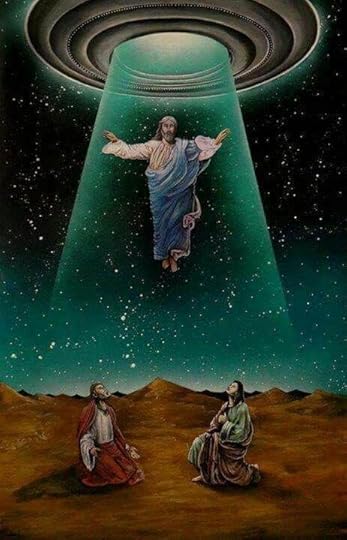
Blending historical religious figures like Jesus, Buddha, and Muhammad into a unified religious framework is not uncommon for many contemporary UFO groups. Not coincidentally, such synthesis is part and parcel of most New Age thought. Thus, Jesus is often viewed as just one of many “ascended masters” and grouped alongside the likes of Vishnu, St Germaine, Melchizedek and Metatron. For example, in her book The UFO That Took Jesus: The Truth About Who Christ Was, Adrienne Jaffery purports to reveal “the hidden secret about Jesus’ identity.” Predictably, the author uses Gnostic writings to assert that Jesus may have been an extraterrestrial.
This predisposition to New Age and occult thought among UFO adherents was noted by professor of psychology Richard McNally. He and his colleagues recruited 10 individuals who claimed to have been abducted by aliens. Their research was summarized this way:
The typical abductee, notes McNally, “has a longstanding interest in ‘New Age’ practices and beliefs such as reincarnation, astral projection, mental telepathy, alternative healing practices, energy therapies, and astrology.”
He and his colleagues conclude, “a combination of pre-existing New Age beliefs, episodes of sleep paralysis, accompanied by hallucinations and hypnotic memory recovery may foster beliefs and memories that one has been abducted by space aliens.”
Dr. Steven Greer is a well-known UFOlogist who also employs occult and New Age thought in his approach to the ET phenomenon. Not only did Greer attend Maharishi International University to study transcendental meditation, in his popular film, Close Encounter of the Fifth Kind, he develops a set of protocols (CE5 Protocols) which he claims he co-created with an extraterrestrial entity during a contact experience as a young adult. Gaia magazine elaborates:
Part of these protocols involves going into deep states of meditation and opening up one’s consciousness to the possibility of contact with beings from elsewhere in the universe. Once this is done, the meditator then asks any extraterrestrial entities to make contact, while guiding them with a specific vector to their location; this involves universally, galactically, within our solar system, planet, country, and so on.
Famed UFO abductee, Whitley Strieber, is another example of this kind of predisposition to New Age thought and occultism.
Streiber exploded on the UFO scene after a series of alleged alien abduction experiences, which he chronicled in his hugely popular book, “Communion” (1987) The religious inference in the title is intentional as Strieber inevitably describes his contact with these “visitors” as a “journey toward higher consciousness.” He said this about that series of encounters:
The close encounters I had between 1985 and 1994 were scary, but only because they were so unusual. The people — or beings — I met were complex and, in the end, gentle. They had a wonderful, subtle sense of humor. There were many personalities involved, obviously many different individuals. My life with them was spiritually and intellectually rewarding. They responded with deep understanding to the path I was on, and worked with me as true masters work with a student on the journey toward higher consciousness…
This idea of a “journey toward higher consciousness” is consistent with much New Age thought. Indeed, Streiber was a student of the Gurdjieff Foundation for more than fifteen years. According to Wikipedia, “Gurdjieff taught that people are not conscious of themselves and thus live their lives in a state of hypnotic ‘waking sleep’, but that it is possible to awaken to a higher state of consciousness and serve our purpose as human beings.” In his interview with Mitch Horowitz, Strieber admitted that his involvement with the Foundation was a gateway to his contact with these alien entities, saying “They knew that they could get into a very deep relationship with me because of that.”
Many have drawn a connection between Madame Blavatsky, the founder of Theosophy, and Gurdjieff. Blavatsky has been called The Mother of Modern Spirituality and the godmother of the New Age movement. She popularized the concept of “ascended masters” who guide the human race towards an appointed evolution. According to Encyclopedia.com,
Blavatsky taught that both individuals and the human race were engaged in an upward evolutionary process. At the same time, she pictured a hierarchy of Masters headed by a being known as the Solar Logos. …Together, the masters constituted the Great White Brotherhood. A number of the spiritual leaders from past history were pictured as members of the hierarchy. For example, the person known as Jesus, revered as the fountainhead of Christianity, is believed to hold the office of Maitreya in the hierarchy.
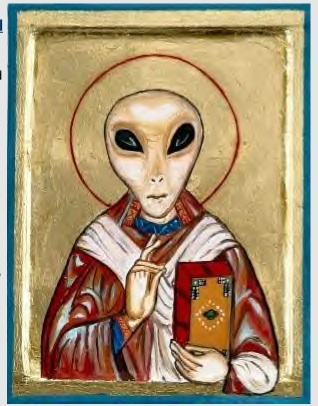
Gurdjieff has been described as the “spiritual descendant” of Madame Blavatsky. They are Western Esoteric Teachers in Parallel. Both have attributed their teachings to “secret knowledge transmitted through initiates” and have significantly influenced “the emergence of new religions and spiritualities, particularly the New Age movement.”
It is not unusual, then, to see similar esoteric themes in Whitley Strieber’s alien abduction accounts. For example, in his book, Jesus: A New Vision, Strieber uses Gnostic writings to deconstruct traditional conceptions of Christ. As one reviewer of the book put it, “Strieber’s foundational assumption is that Jesus was a man,” not God, and that “everything he did is therefore within the range of human capabilities and would in principle be possible for others to do as well.” The writer summarizes, “Jesus was a man who became divine, [so] that others may follow him and do what he did.”
Given Strieber’s religious claims, it is perhaps unsurprising then to see him described in terms of a “shaman.”
Provided Strieber is telling the truth about his experiences, it would not be a stretch to classify him as a kind of shaman, an intermediary between this world and the world of the gods – the gods being the visitors.
With the insertion of metaphysics and religion into the UFO discussion, the corollary between alien encounters and shamanism is to be expected. Just as the shaman stood between his tribe and the gods, so the alien abductee becomes a conduit between his people and the “advanced intelligences” who’ve engaged him.
Which is why UFO researcher Bill Chalker suggests an intrinsic connection between shamanism and alien abductions. He writes,
Aboriginal shamans have a powerful and consistent tradition of ritualistic initiation, the elements of which bear amazing similarities to many modern-day UFO abductions and contact accounts.
As such, the mode of “contact” with said entities has become less about spacecraft and more about beliefs or a state of mind. Which is why some researchers now suggest that psychedelics (like psilocybin, LSD, and DMT) may even facilitate contact with interdimensional intelligences.
In his recent podcast interview with professor of religion and UFO researcher Diana Walsh Pasulka, Joe Rogan connected the use of psychedelics with UFOs and alien encounters, claiming that the mind (specifically, the pineal gland) is a “gateway” to such experiences. Rogan mentions DMT, a drug derived from the Ayahuasca plant which produces hallucinogenic effects similar to psychedelics like LSD and magic mushrooms, and how many people have contacted “enlightened beings” during these psychedelic sessions (“these beings are… truth” Rogan says near the 1 hr. 10 min. mark). Interestingly, Rogan and Pasulka equated these encounters with “abduction experiences,” where contact with non-human agencies takes on a transformative, religious weight.
The link between shamanism and hallucinogenic drug use is quite well-known. In the paper Psychoactive Plants Used during Religious Rituals, H. Umit Sayin notes the proliferation of hallucinogenic substances in ancient religious rituals:
Psychoactive plants that induce a form of altered states of consciousness… have been widely used during the religious rituals of many cultures throughout the centuries. …The main purposes of these plants were spiritual healing; to contact with spirits; to contact with the souls of ancestors; to reach enlightenment (Nirvana or Satori); to become a master shaman, pagan, or witch; and to reach so-called-other realities. In most of the ancient religious rituals such plants were consumed as a part of the traditional shamanic or pagan culture for many centuries and most of the religious figures and images in the ancient and modern religious systems are a result of these hallucinogenic substances and H-ASC (hallucinogen-induced ASC) mind states.
The shamanic use of psychoactive substances to make “contact” with spirits and ancestral personages bears an eerie resemblance to contemporary psychonauts and alien abductees.
David Jay Brown has studied parapsychology and the effects of psychoactive drugs. His research includes DMT. He notes,
It appears that DMT has the extraordinary power to open up an interdimensional portal into another universe — often referred to as ‘hyperspace’— and to reliably allow us to establish contact with the intelligent beings who reside there.
Opening up an “interdimensional portal” to make contact with “intelligent beings” is the essence of shamanism. But who are these interdimensional beings, and should we be seeking contact with them?
In his paper Shamanism and Alien Abductions, Simon Brian Harvey-Wilson notes that “Shamanism… is making a popular resurgence in Western societies, especially among New Age enthusiasts.” After interviewing eleven alleged alien abductees, the author was unable to conclude whether the nature of the beings contacted by the abductees were “genuine extraterrestrials” or “spirits.” However, the effects of those encounters often appear eerily analogous.
Some UFO researchers (ufologists) claim that being abducted by aliens can be compared with shamanic initiation experiences in traditional societies in that both types of experience may be similarly transformative, leading to a more spiritual or animistic world-view, a deep concern for the environment and the development of paranormal abilities such as healing.
Notice, the “transformative” characteristics of these alien abductees was three-fold — adopting an “animistic worldview,” “a deep concern for the environment,” and “the development of paranormal abilities.” Not coincidentally, all three of these beliefs align with New Age philosophical perspectives. In that framework, traditional belief in God is jettisoned, Nature is deified, and psychic abilities are developed. This understanding parallels that put forth by legendary UFOlogist Jacques Vallée who concluded that the entities behind the alien abduction phenomenon are not just benevolent cosmic visitants, but are actually attempting to shape a new belief system (which is the subject of Vallée’s book Messengers of Deception).
Vallée concludes that the experiences of alien abductees bears a striking similarity to “occult traditions.” He writes,
I do not believe anymore that UFOs are simply the spacecraft of some race of extraterrestrial visitors. This notion is too simplistic to explain their appearance, the frequency of their manifestations through recorded history, and the structure of the information exchanged with them during contact. Human beings are under the control of a strange force that bends them in absurd ways, forcing them to play a role in a bizarre game of deception. The symbolic display seen by the abductees is identical to the type of initiation ritual or astral voyage that is embedded in the occult traditions of every culture…
Though not a professing Christian, Vallée nevertheless interprets alien abduction as involving “a bizarre game of deception.” Likewise, many researchers see a parallel between the messaging of alien abductees and occultic, New Age beliefs. The Urantia Book is a good example of this.
The Urantia Book was allegedly dictated to a psychiatrist named W.S. Sadler between 1934 and 1935. The massive volume was communicated by a man who spoke in his sleep and claimed to be speaking on behalf of alien super-mortals called revelators. While the authorship and origins of the book remain a mystery, it is typically portrayed as a communique from extraterrestrials.
Though difficult to summarize everything taught in this 2,000+ page tome, one research site highlights several key teachings:
The cosmos is divided into seven concentric rings, the center ring being the Isle of Paradise, where God resides.The Urantia Book supersedes the Bible as the ultimate source of truth.God exists in three separate trinities: the existential Paradise Trinity, the experiential Ultimate Trinity, and the experiential Absolute Trinity.God is known as the Universal Father and is the father of all humanity.Jesus Christ is one of many Creator Sons.Perfection is attained by continually seeking goodness over the course of many lifetimes, on many different planets.The Urantia Book is reflective of a prevalent messaging within UFO circles. It is not uncommon for someone in alleged contact with alien entities to disavow or devalue key biblical doctrines concerning the nature of God, Christ, Man and Salvation, as the Urantia Book does. The fact that this “gospel” communicated by so many alien abductees and/or psychonauts is at such odds with a biblical worldview, should be deeply disturbing to the Christian.
For this reason, philosopher and apologist Brian Huffling, concludes:
UFO phenomena is directly and explicitly anti-Christian—not just anti-religious: anti-Christian. Much of the “teachings” of these beings are specifically against the deity of Jesus Christ and the teachings and truths of the Gospel. Some of their teachings claim that Jesus himself was an alien and was raised back to life by aliens.
Making the UFO field even more disturbing is the melding of hallucinogens into the “contact” experience. Indeed, the Bible condemns the use of drugs for occult purposes. When condemning witchcraft, sorcery, and divination, Scripture often uses the Greek word pharmakeia, from which we derive our words “pharmacy” and “pharmaceutical.” The Ezra Project explains:
It is no surprise that [pharmakeia, pharmakon, pharmakos], which form the base of our English “pharmacy,” originally described someone who mixed herbs and other substances to make potions for medical purposes…
Ancient medicine was often tangled with spirit practices, and practitioners of sorcery would also use potions to attract the gods with a pleasing smell, to satisfy the demands of the spirits, or to put a person in a stupor that would make them receptive to spiritual influences.
New Testament references to pharmakeia all refer to sorcery or witchcraft, not mere medicine. Every mention of the words condemns the practice.
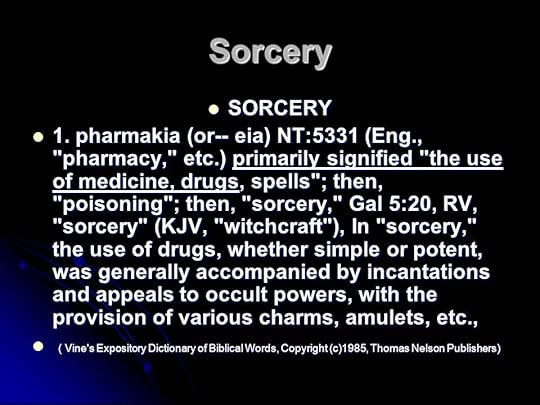
The use of hallucinogens “to open up an interdimensional portal into another universe… and to reliably allow us to establish contact with the intelligent beings who reside there” finds a biblical parallel in sorcery and witchcraft. In this sense, contemporary psychonauts and shamans are akin to spiritists and their alien “contact” sessions are essentially seances.
For these reasons, the UFO phenomenon should be of great interest interest to Christians. Though the Bible has nothing explicit to say about the possibility of extraterrestrial life, it affirms a universe teeming with life, both visible and invisible. Scripture posits the reality of multiple dimensions and their inhabitation by exotic beings (like seraphim, cherubim, archangels and demons), but it also cautions us about “contact” with said beings. The Apostle Paul exhorted, “But though we, or an angel from heaven, preach any other gospel unto you than that which we have preached unto you, let him be accursed” (Gal. 1:8 KJV). Likewise, the Apostle John warned, “Dear friends, do not believe every spirit, but test the spirits to see whether they are from God, because many false prophets have gone out into the world” (I Jn. 4:1 NIV).
While it is unclear that all UFO phenomenon is inherently evil, the message of many alien encounters constitutes a false gospel. Seeing lights in the sky is one thing. Receiving communique from alien visitors which undermine Scripture and portray an unbiblical view of Jesus, is another. Furthermore, Christians are expressly forbidden from seeking information via spirit beings, whether deceased humans or non-humans, especially when that pursuit involves pagan, shamanistic practices. Likewise, actively pursuing contact with inter-dimensional or extra-terrestrial intelligences should be anathema to the child of God.
So while the current UFO phenomenon should be deeply interesting to Christian believers, its embrace of occultism and New Age paganism should raise great concerns. Because of this, we must approach the subject with caution and discernment.
January 8, 2024
Redemptive Hope Should Be a Distinctive of “Christian Horror”
The following is an excerpt from my book Christian Horror: On the Compatibility of a Biblical Worldview and the Horror Genre, from the section entitled Christian Horror Offers Redemption Amidst Darkness.
***
Much contemporary horror can be bleak and filled with despair. In fact, nihilism and hopelessness often occupy a significant swath of the horror canon, a trend that parallels the contemporary world’s spiritual climate. For instance, Time magazine recently reported, More Millennials Are Dying ‘Deaths of Despair,’ as Overdose and Suicide Rates Climb. This rise of anxiety and depression among young adults in the U.S. is unprecedented, leading Psychology Today to describe us as undergoing an “epidemic of hopelessness.”
Likewise, some contemporary horror reflects a growing hopelessness and despair in society.
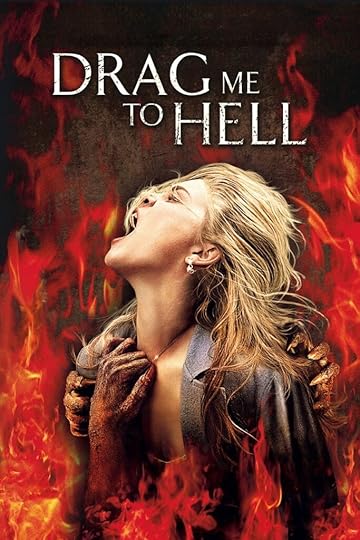
Stories like Drag Me to Hell—where, despite tremendous resistance on the part of the protagonist, an old woman’s curse still damns the lead character to hell—often frame evil as omnipotent and irresistible. Like the ancestral curse featured in Ari Aster’s Hereditary which pulls a family (at least, what remains of it) to a bleak existential inevitability. In Frank Darabont’s The Mist (2007) suicide is portrayed as the characters’ only viable option. Then there’s the popular Netflix series Midnight Mass (2021) whose entire cast eventually vaporizes into ash, wafting into a godless cosmos, “returning to pure energy; all their memories but ‘fleeting little dreamlets imprinted upon the tissue of [a] dying brain.’”
Thomas Ligotti, a weird fiction author who won the Bram Stoker Award for Lifetime Achievement in 2019, is another horror author known for his pessimistic, nihilistic view on life. One author describes Ligotti’s method thus:
Whereas other horror writers often grapple with the primordial fear of death, Ligotti writes about the endless horror of life. His is a world of deep paranoia and pointlessness. Even his villains seem sad and pathetic, which they are as fellow sufferers of the world we all inhabit.
Elsewhere, Ligotti has described himself as an anti-natalist. Anti-natalism is the philosophical position that assigns a negative value to birth and views procreation as immoral. Because life entails inevitable suffering and ultimate death, and no one chooses to be born, the entire human race should stop reproducing and hasten its own extinction. Ligotti himself describes it this way:
Antinatalism is based on the principle that suffering of whatever kind or degree should not be caused or perpetuated, and that human existence necessarily entails suffering that we can neither escape nor justify, least of all by experiencing pleasures. Thus, the only way to end all suffering is to cease producing beings who suffer. — Thomas Ligotti, quoted in Nathaniel Katz, ‘Interview: Thomas Ligotti’ (2011), in Cardin (ed.), Born to Fear, pp. 185–97 (p. 191)
It goes without saying, but such a worldview is violently antithetical to Scripture. Of course, the Bible affirms the presence of suffering and evil. Unlike many Eastern religions, Christianity does not see suffering as illusory or part of some karmic cycle. Instead, Scripture describes suffering as the fallout of humanity’s rejection of God. Suffering is something we should both anticipate and attempt to alleviate. Christians are called to care for the sick and suffering. Which is one reason why the development of medicine and the creation of hospitals were both greatly influenced by Christianity.
Suffering is something we should both anticipate and attempt to alleviate.
In the larger scope, God ultimately promises to recreate the world. The last book of the Bible describes “a new heaven and a new earth” (Rev. 21:1) where God will wipe every tear from His peoples’ eyes. And “There will be no more death or mourning or crying or pain, for the old order of things has passed away” (vs. 4). This is why the apostle Paul famously said,
…the sufferings of this present time are not worthy to be compared with the glory which shall be revealed in us. (Rom. 8:18 KJV)
Of course, in this life evil sometimes wins. We must endure suffering on earth. However, this does not mean that life is meaningless or without hope. Yielding to despair and pessimism is counter to the promises of Christ. Jesus said, “In this world you will have trouble. But take heart! I have overcome the world” (Jn. 16:33). Christ’s Resurrection is the foundation for all Christian hope. Because He lives, we can live! (Jn. 14:19). His Resurrection assures ours.

Likewise, for the believer, even the bleakest of situations is not cause for despair. The early church experienced mass persecution and often unspeakable tortures. It led Tertullian, one of the Church Fathers, to coin the term, “the blood of martyrs is the seed of the Church.” Despite suffering and persecution, Christianity spread in unprecedented fashion. Furthermore, Scripture says that when temptation overtakes us, there is always a “way of escape” (I Cor. 10:13). During dark times, God does not leave us stranded. Even when tragedy strikes or trial leads to defeat, God promises to remain by our side. In the event of inevitable death, Christians still maintain the hope of glory. While some may view this as pie-in-sky optimism or frame such beliefs as trite positivism, Christian hope is a powerful and essential distinctive of the faith.
As David Taylor, Pastor of Arts at Hope Chapel in Austin, Texas, reminds us:
The horror story, in the end, is a reminder that our present reality is disturbed and distorted. In the hands of the Christian, that reminder can become an invitation to redemption. Leave behind your claims to self-sufficiency! Stop trying to manage your life! Quit calling good evil! Do not be afraid of death! The horror story is not an escape from life, in all its wildness and terrible beauty; it is rather a way of walking through it, and as such a reminder that there is meaning, thanks be to God, in the middle of all the horror.
One of the common arguments against the horror genre is that dark subject matter will inevitably affect the human psyche. The individual who consumes such content may become spiritually and emotionally disquieted, disturbed, or fearful. This is inarguably true. Anyone who’s ever watched a horror movie knows the feeling of becoming troubled or uneasy. This could mean that the filmmaker has done their job! But it could also mean that the messaging of the piece is unbiblical or erroneous.
Christian horror is unique in that it occurs in a redemptive context. Or as Taylor put it, “there is meaning… in the middle of all the horror.” Of course, this doesn’t mean that every story should have a happy ending. Nor does it mean portrayals of evil should be tempered or softened. It means that Hope and Goodness should always be lurking within our tales. Even amidst the darkness, there should be a “way of escape.” Even in “the valley of the shadow of death” (Ps. 23:4), God is with us. Though evil prevails, justice is inevitable.
October 25, 2023
“Christian Horror” 2nd Edition is Now Live!
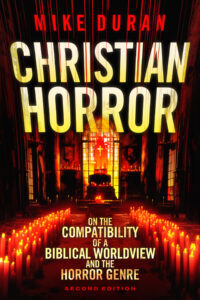
I’m thrilled to announce that the 2nd edition of “Christian Horror: On the Compatibility of a Biblical Worldview and the Horror Genre” is now live at Amazon! The second edition has almost twice the content as the original, clocking in at nearly 65K words (as opposed to the first edition’s 35K). Of course, I’ve included references to more current books, films and research, as well as adding several new categories and appendices, such as a section on Folk Horror, Generational Sin and Family Curses, and appendices on Occult Objects (skulls, and haunted houses), “Woke” Horror, Ghosts, and Zombies. I’ve even added a series of Study Questions at the end of each chapter for those interested in possible group discussion or further research. The book has also received a facelift from Kirk DouPonce. As with the first edition, my goal is simple—to provide an apologetic for engaging with the horror genre from a biblical perspective.
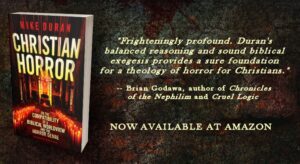
Merrie Destefano, USA Today bestselling author, and award-winning author of Shade: A Retelling of Mary Shelley’s Frankenstein, says of the book: “In Mike Duran’s thought-provoking exploration of Christian horror, he boldly unveils the chilling truth: redemption is often the beating heart of the most powerful horror stories. As someone who has delved into the depths of both darkness and light within the realm of horror literature, I can attest to the profound and transformative journey that horror can offer. However, Duran has done something that I did not expect in Christian Horror: On the Compatibility of a Biblical Worldview and the Horror Genre. He has written the book that I wish I had written.”
“Christian Horror” is available in Kindle, Paperback, and Hardcover. You can purchase a copy HERE.
September 25, 2023
Update: “Christian Horror” 2nd Edition
The first iteration of Christian Horror: On the Compatibility of a Biblical Worldview and the Horror Genre, was drawn from a series of blog posts I had assembled between 2005 and 2015. That period paralleled my pursuit of a writing career. During that time, I had quite a few articles and short stories published (along with several novels). One of the first articles I ever wrote was published on Halloween, 2005. It was featured in Relevant Magazine and was titled Keeping an Ear to the Ceiling. The article discussed America’s continued fascination with paranormal phenomenon and the supernatural. The piece was indicative of my own interest in the subject, and what would become a thematic mainstay in much of my fiction and nonfiction.
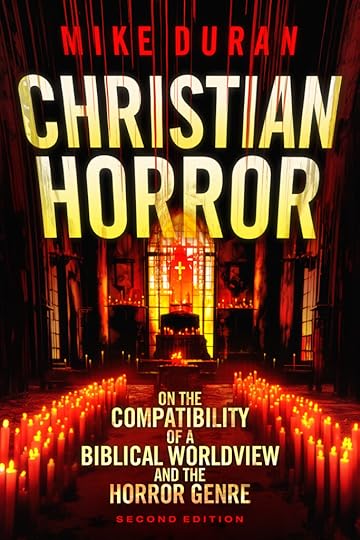 Christian Horror 2nd Edition
Christian Horror 2nd EditionThe idea of an “apologetic” for Christian interest in the horror genre developed organically, and rather quickly. Christian Romance and “clean fiction” were the defining distinctives of the evangelical market, as they remain today. Stories about ghosts, monsters, and paranormal phenomenon, on the other hand, were a very difficult sell. However, the standard defense for this genre imbalance, as well as objections to horror from the evangelical gatekeepers, seemed to me, to lack bite.
I published Christian Horror independently, in 2015, not just as a rebuttal to the going consensus, but as an apologetic for Christian writers, like myself, who found the horror genre a powerful medium for exploring biblical themes.
Suffice to say, response to the book was pleasantly surprising. I soon began receiving emails and messages from Christian artists who’d felt alienated and misunderstood for their interest in darker subject matter. Several aspiring filmmakers, as well as new writers, reached out for advice about navigating the genre. I was asked to speak on the subject at several writer’s conferences and workshops. I also received numerous requests for podcasts interviews regarding the book and the subject of biblical horror.
Bottom line—Christian Horror appeared to have struck a nerve.
Since its publication, the horror genre has continued to grow in popularity. For example, The New York Times called 2017 “The Biggest Year in Horror History.” Ministries and pop cultural commentators began addressing the issue more frequently. Websites like the popular Christianity.com began writing articles like 10 Horror Movies with Christian Themes for Halloween while Crosswalk.com asked Should Christians Watch Horror Movies? Religious horror movies became a subject of interest in mainstream cinema mags like Movieweb which compiled The Best Religious Horror Movies of All Time. Even Christianity Today has joined in, starting a new podcast called Be Afraid which is described as “an exploration of fear, faith, and stories that scare the daylights out of us.” And Christian involvement in the genre has continued to expand, with films like Nefarious (2023) being openly labeled as “Christian horror.”
Because of this, I felt it was time to revisit the subject.
The second edition has almost twice the content as the original, clocking in at nearly 62K words (as opposed to the first edition’s 35K). Of course, I have included references to more current books, films and research, as well as adding several new categories and appendices. I’ve even added a series of Study Questions at the end of each chapter for those interested in possible group discussion or further research. The book has received a facelift via Kirk DouPonce (see above). As with the first edition, my goal is simple—to provide an apologetic for engaging with the horror genre from a biblical perspective. The 2nd edition of Christian Horror will be releasing ’round Halloween of next month.
July 31, 2023
Why Your Conspiracy IQ Matters
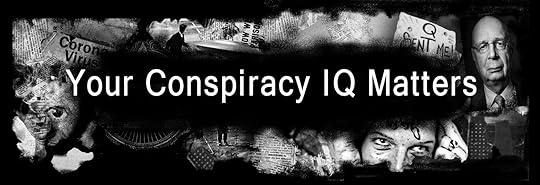
Thomas Gray, an 18th century poet, is responsible for the often-quoted phrase, “Ignorance is bliss.” However, the entirety of Gray’s actual quote is, “Where ignorance is bliss, ‘tis folly to be wise.” President Thomas Jefferson embellished that quotation with his own, saying, “If ignorance is bliss, why aren’t more people happy?”
Scripture has a lot to say about wisdom and knowledge. But the absence of them is rarely associated with “bliss.”
This is especially true of Christians and conspiracy theories.
While many evangelical academics and influencers spend significant energy scolding Christians about entertaining conspiracy theories (like HERE, HERE, and HERE), there’s some very good reasons for believers to remain informed and pay attention to ideas and claims that influence the contemporary mind.
Here’s three reasons why your conspiracy IQ matters.
The Arc of Biblical History is ConspiratorialIn a certain sense, God is the ultimate Conspirator. Not only is He invisible, He is all-powerful. Perhaps more importantly, He is not dormant. He has a fantastic Plan that He is overseeing, masterfully bringing it to pass using events and players often unbeknownst to their own understanding. In fact, He alone knows “the day or the hour” (Matt. 24:26) that will signal “the end of the age.” In fact, when describing the end of this present age, Jesus commanded His followers to be vigilant; to understand “the signs of the times” (Matt. 16:3) and to be on guard against deception. “Watch out that no one deceives you,” Christ warned (Matt. 24:4). This end-times deception will be so powerful that it could possibly “deceive the very elect” (Matt. 24:24). Which is why Jesus often said, “Be on guard. Be alert” (Mk. 13:33).
Despite the assertion of many possible futures — from utopian to apocalyptic — Christians believe the Scripture reveals a rather specific unfolding redemptive plan. While it could involve technology, nuclear war, and even non-terrestrial entities, the biblical timeline envisions our world culminating in global cataclysm, war, spiritual deception, persecution of Christians, the appearance of the Antichrist, Armageddon, the Second Coming of Christ, and the Final Judgement. Yes, there are different branches of eschatology. But the Church has historically believed that most of these aforementioned elements will constitute the End Times.
Thus the Christian approaches conspiracy research from the perspective that there is a Plan behind human history.
One reason Christians should be interested in conspiracy theories is because we believe that Someone is in control; the world is not rudderless, and events do not happen randomly. The world is moving towards an appointed end.One reason Christians should be interested in conspiracy theories is because we believe that Someone is in control; the world is not rudderless, and events do not happen randomly. The world is moving towards an appointed end. Many conspiracy theories intersect, in some fashion, with biblical worldview themes. Theories about a New World Order, digital tracking, globalization, governmental cover-ups, the spread of evil, mass manipulation, the increase of paranormal phenomenon, evidence of alien life forms, etc. might all play a role on God’s unfolding Plan. In this sense, Christians have a fundamentally different approach to the world and what transpires in it than does the secularist. Not only are we “a pattern-seeking intelligence,” we believe that God is weaving a “pattern” we are to intuit.
People in Power Sometimes Do Very Shady ThingsIn her op-ed Conspiracy theories are caused by government secrecy, Caitlyn Johnstone suggests that one reason for the exponential rise in conspiracy mongering are the growing revelations of actual governmental cover-ups and conspiracies.
All the fixation on the way unregulated speech on the internet has contributed to the circulation of conspiracy theories conveniently ignores the real cause of those theories: government secrecy.
If the most powerful government in the world were not hiding a massive amount of its behavior behind increasingly opaque walls of secrecy, people would not need to fill in the gaps with theories about what’s happening, because there would be no gaps; they would simply see what’s happening.
Johnstone is correct in seeing industries, networks, and governments as “hiding a massive amount of [their] behavior behind increasingly opaque walls of secrecy.” Is it any wonder that the average citizen casts a side-eye at their own government?
There are many examples. For instance, Mind-control experiments like MK Ultra were concealed from the public. “Though Project MK-Ultra lasted from 1953 until about 1973, details of the illicit program didn’t become public until 1975, during a congressional investigation into widespread illegal CIA activities within the United States and around the world.”
Many other government programs operated secretly, outside of public purview. For example, Operation Paperclip brought Nazi scientists into the U.S. after World War II to exploit their knowledge. In 1977, Carl Bernstein broke the story about Operation Mockingbird, a covert CIA program to employ and use journalists to create propaganda via mass media. Many see Operation Mockingbird as the precursor to today’s employment of propaganda using the media and social media ecosystem.
Many black Americans still have a healthy suspicion of the U.S, government. One reason is because The US Public Health Service lied about treating black men with syphilis for more than 40 years. Also, we now know that mass public surveillance and data collection of U.S. citizens is taking place. Algorithms constantly collect data and monitor our preferences and movement. Even going “digitally dark” does not ultimately prevent one from being traced. According to Popular Mechanics, an estimated 30 million surveillance cameras are now deployed in the United States shooting 4 billion hours of footage a week.
Powerful industries continue to exploit the average consumer. Not only are pharmaceutical companies price gouging, but the tobacco industry concealed evidence of nicotine’s addictive qualities and health impact for decades. Even now the industry continues to manipulate data to reach new smokers. Compounding this are continued revelations about governmental malfeasance in its handling of the COVID pandemic and the vaccines.
One reason that Christians should be aware of conspiracy theories is because people in power often abuse that power. As believers, we should be concerned about the exploitation and victimization of the less powerful. Just because a claim is labeled a “conspiracy theory,” or someone who dares investigate alleged claims is scolded, should not hinder the Christian from truth-seeking. Winking at criminal acts or dismissing injustice is not a virtue. Government decrees and mandates are not infallible. The Bible is explicit about the Christian’s call to seek justice and fight oppression wherever it exists. While many translate social justice into strictly humanitarian terms, fighting for the cause of the poor or powerless, or addressing societal wrongs, often involves challenging those in power… even when charges of conspiracy-mongering are leveled.
Engaging CultureTheologian and literary critic Harry Blamires described the “Christian mind” this way:
The Christian mind—a mind trained, informed, equipped to handle data of secular controversy within a framework of reference which is construed of Christian presuppositions. The Christian mind is the prerequisite of Christian thinking. And Christian thinking is the prerequisite of Christian action.
The Christian mind is “equipped to handle data of secular controversy” and to sift that data through the sieve of “Christian presuppositions.” Conspiracy claims could fall under the heading of “secular controversy,” meaning something that does not directly affect the Church. Even so, the Christian mind is “equipped” to engage those claims.
Growing in knowledge about the world around us is intrinsic to our callings. For some (perhaps many) that could mean developing a basic understanding of conspiracy theorism and the various claims that permeate our culture. Especially when charges of conspiracy-mongering and naivete are so often attached to evangelicals. Being able to provide a rational defense for or against certain popular conspiracy claims can be a helpful apologetic bridge. Sadly, intellectual laziness is often the only real reason we can’t provide such a defense.
In Acts 17, the Apostle Paul famously engaged the Athenians. The location was named the Areopagus, which served as a public court and a place for intellectual and public debate. These were some of the most cosmopolitan people of the ancient world. Paul was privy to their culture and customs, and even quoted some of their own poets and philosophers in an attempt to engage them (vs. 28).
As Christians, being able to engage our audience is incredibly important. Simply relying upon what others say about an incident or claim is not very persuasive. What your pastor thinks about something is important. Nevertheless, pastors (and medical experts, scientists, fact-checkers, and journalists) can still be biased and reach faulty conclusions. Saying “the Bible says” or “experts agree” will not always win us a hearing.
What your pastor thinks about something is important. Nevertheless, pastors (and medical experts, scientists, fact-checkers, and journalists) can still be biased and reach faulty conclusions.Part of being “prepared to give an answer to everyone who asks you to give the reason for the hope that you have” (I Pet. 3:15) could also mean being “prepared” with other answers. For instance, certain conspiracy claims can be an obstacle to one’s acceptance of Christ. I recall once witnessing to a man who believed that the DaVinci Code theory was correct. According to him, Jesus was just a wise moral teacher who didn’t die on the cross, but fathered at least one child, probably by Mary Magdalene, and His bloodline continued through the present day. In that case, being “prepared to give an answer” also meant being prepared to rebut faulty “answers” that this man had come to believe. Likewise, conspiracies surrounding the Church, the life of Christ, the Resurrection, the Bible, or contemporary Christians could be an important part of pointing someone to Christ.
Similarly, when loved ones or co-workers speak about world events or political theater, it is to our benefit to be able to engage them. No, this doesn’t require that we know every breaking news story in detail or research every conspiracy claim that comes down the pike. However, having a broad knowledge of conspiracy theories can be a meaningful way to engage others.
So while many evangelical thought-leaders, pastors, and academics continue to scold their fellow Christians for embracing conspiracy theorism, there remains some good reasons for believers to research the subject. Not only do many conspiracy theories contain elements of the truth, many claims that were once disputed, have now proven true. Furthermore, the Bible describes the very arc of history as conspiratorial. Conspiracy research is unique for the Christian because they view the Bible as their ultimate authority. Pastors, scientists, politicians, and academic “experts” cannot replace the truth of Scripture in the hands of a discerning, objective child of God.
For a more detailed treatment of this subject, see my book Christians & Conspiracy Theories: Investigating Alternative Truth-Claims without Buying in to Fear, Fanaticism, or Tribalism.



